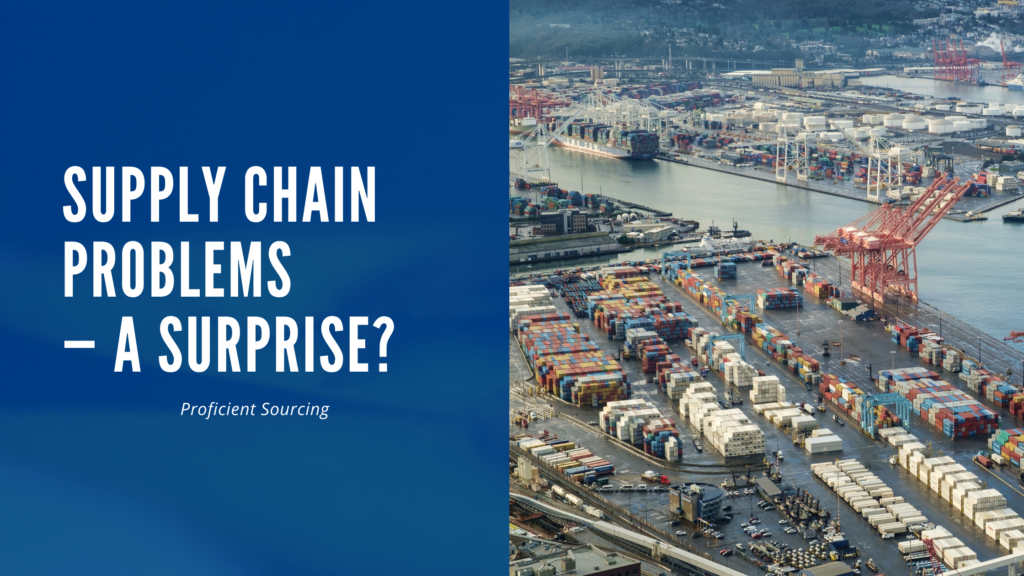
The country is facing a continuous stream of forecasts of supply chain problems, even threatening Christmas! Pictures of multiple ships at anchor waiting to offload massive loads of containers are everywhere. We heard a Los Angeles port authority claiming they’ve just begun to activate one of the very many “switches’ needed to ramp up operations. The Secretary of Transportation recently returned from 2 months of some sort of personal time off, but apparently no one was designated to act in his place.
Lack of workers, covid disruptions, limited warehouse space, and shortage of truck drivers are all among the excuses noted for the current problems.
It would seem to us, given the large number of players as well as the size of the individual parts, such as ocean freight ships, these issues ought to have been known and dealt with long ago. Can this level of confusion be a surprise in this day of constant communications, sophisticated ERP’s, and interconnected computer networks?
If there’s a gigantic unforeseen event, such as the 2011 Japanese tsunami and nuclear plant disaster, supply disruptions are abrupt and dealt with. But the current problems didn’t appear in the news we saw until fairly recently. Yet, the underlying factors must have been well known for months.
All of us having to do with manufacturing must be familiar with production planning, as well as logistics. On a very small scale, the output of a manufacturer is forecast well in advance, so the shipping pieces can also be planned for. In most of these small local situations, it is assumed that some trucking, for example, will be readily available when needed, so advance planning isn’t so important. However, if something like a future trucker strike is in the news, you can bet the advance planning goes into overdrive. After all, shipments usually generate invoices!
However, moving up the size scale, if a company is supplying a major auto company, for example, the critical parts shipments need to be assured in advance in order to avoid very big problems. Since the supplier usually arranges shipping, our experience is that customers have very limited tolerance for logistics problems.
We don’t know much about international shipping issues, but it seems that these would require far more advanced planning than local job shop issues.
Product ordered from places like China would require the manufacturer to schedule production. Beyond that, transportation of product needs to be planned to get the product from plant to the loading port, where containers need to be acquired and loading planned for. Once loaded, they need to be moved onto ships or whatever conveyance is appropriate.
The ships needed to transport the containers need to be scheduled, along with needed fuel, crews, crew food, etc. This, we would think, would need to be communicated to the customer, who’s paying for the shipping, perhaps with deposits.
Then the ship’s transit is tracked so it’s arrival can be anticipated by the unloading port. At this port, handling, storage and the shipping of containers also need some planning. Once again, the vessels would require a long list of supplies to be available.
Finally, the containers are loaded into warehouses or onto rail or trucks, and transported to distribution centers, or perhaps customer locations. Again, all this is subject to some forecasting and tracking.
It would seem to us that every major ingredient of the supply chain has been known for months. Ports not working long enough? No warehouse space? Lack of truck drivers? These cannot have been surprise issues. And who knows what else is missing that’s contributing to the supply chain problems.
It’s impossible to imagine the the head of a port wakes up one day to discover a bunch of giant merchant ships, previously unknown, has arrived at the port needing to be unloaded and there’s no capacity to handle all this.
What’s going on here? Anyone have answers?

